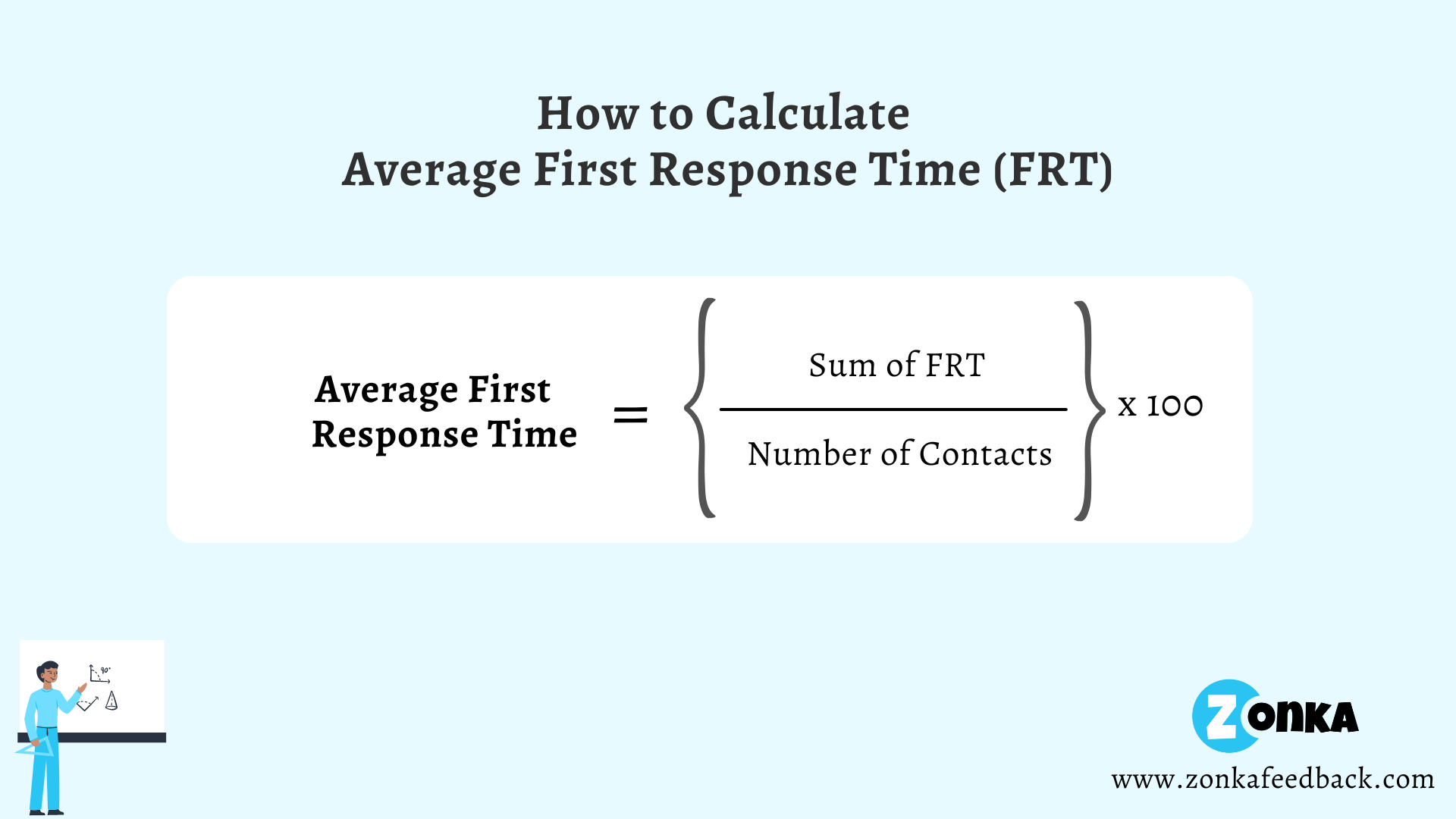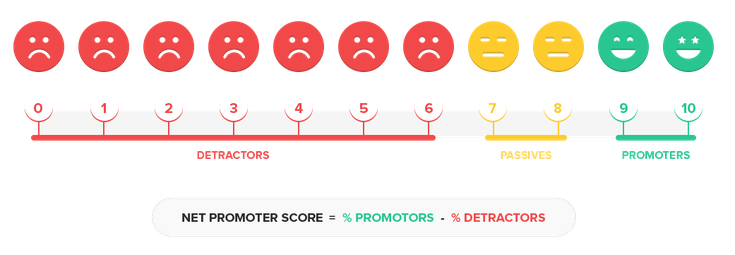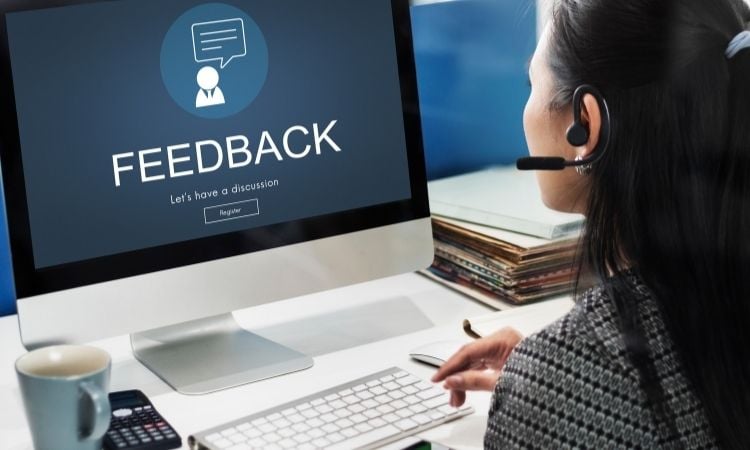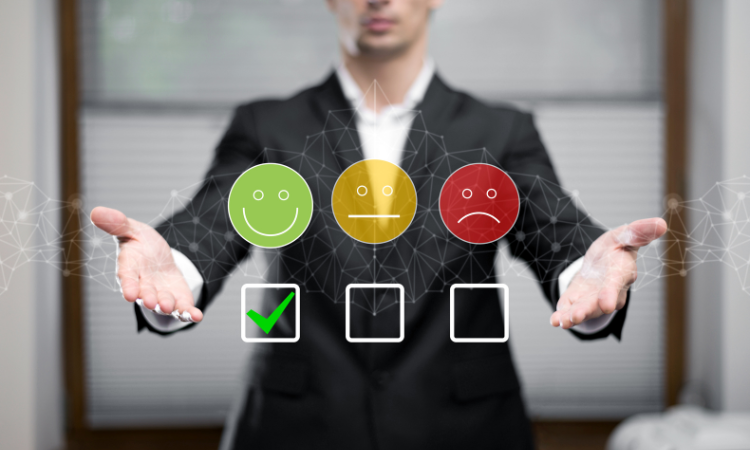We all want to keep our customers happy and satisfied so they do repeat business with us. And customer experience is one differentiating factor that can make or break your customer retention efforts. Customer Service Performance plays a catalyst in achieving that level of customer experience and winning over the trust and loyalty of clients.
No matter how good you think your product or service is, if you can't handle customers' complaints or answer their queries then all your efforts are for nothing. To back this claim, there are stats that claim 58% of customers believe that Customer Service is important for achieving customer loyalty.
One of the factors that can be taken seriously into consideration is Customer Feedback. Feedback on your service, your agent interactions, your channel's effectiveness, & product usability - are all crucial aspects of analyzing the effectiveness of your organizational efforts to keep customers engaged and satisfied in the long run. There are some key Customer Service Metrics that you can measure to get the most out of your Customer Service. In this article, we'll be discussing what Customer Service Performance is and how you can maximize its potential using a few proven tactics. Read on.
What is Customer Service Performance?
In simple terms, Customer Service Performance is the evaluation of how well your organization and Customer Service team provides support to the customers throughout their journey with your business. Measuring the Customer Service Performance allows for analyzing the way customer interactions happen at multiple touchpoints and optimizing those interactions to enhance their experience and build loyalty.
Measure Customer Service Performance
Improve your customer service and grow your business with real-time feedback

Benefits of Measuring Customer Service Performance
Conducting frequent surveys to Measure Customer Service Performance can benefit your organization in more ways than one. For starters, you can identify how satisfied your customers are with your service, product, and brand itself. Other benefits of measuring the performance of Customer Service include-
1. Ability to identify areas of improvement
When you send a survey to clients after each interaction with the customer service agents, you can capture their feedback instantly. By conducting surveys, you can measure the trends of complaints and pinpoint the areas that need improvement. Surveys like agent Feedback Survey and Customer Service Performance evaluation surveys can do the job pretty well in giving you actionable customer feedback for Customer Service Agents.
2. Improve Customer retention
At the end of the day, when you're about the close the shutter of your business and take that well-needed nap, you don't want to wake up to a note from your "well-served" customer saying - they are leaving. Sadly, the note is not always going to be there.
Well, you'd definitely want to avoid such a situation, and measuring Customer Service Performance helps you do just that. The insights from the feedback can be used for improving the services and can help you increase loyalty among the customers contributing to persistent sales. When customers feel their feedback is appreciated and are presented with an increased quality of Customer Service, the Customer Retention rate goes up.
3. Higher Customer Lifetime Value (CLV)
When the CLV of a single customer account grows, the chances of repeat purchases increase. By increasing the Customer Lifetime Value, you can predict the revenue from customers. There are plenty of ways to improve Customer Service Performance that can directly impact those numbers and help gain customers' trust in your organization. Once that happens, you can move towards other areas like up-selling and cross-selling.
4. Identify where you're doing well
Other than what can be improved, monitoring your Customer Service Performance can tell you where you are already doing well. With the help of data, you can draw circles around those areas and put your focus on areas that actually need attention by saving time and energy for your Customer Service agents.
Setting Right Standards for Customer Service Performance
To Improve Agent Performance and enhance the effectiveness of your overall Customer Service, there have to be some standards established in place. These "pre-defined guidelines" can pave the way for a delightful Customer Experience and encourage those customers to again do business with you.
1. Right Policies
Before the customer knocks on your door, your Customer Service agents have to be prepared and with that we mean they should be well aware of the policies and procedures in place regarding customer interaction.
These procedures usually involve training the employees through specifically developed programs that encourage a working knowledge of the product as well as other best practices in handling Customer Service. Training programs can also emphasize the importance of seamless processes such as digital customer onboarding to reduce friction in the customer journey.
2. Service Expectations
For great Customer Service, you need to set the right expectations to determine what your Customer Experience should look like. This requires you to closely monitor aspects of your Customer Service model like waiting time, agent interactions, return/exchange guidelines, and other important service-related factors.
Also, ensure that you have enough staff capable of handling customer complaints on time and hold the right knowledge of the product itself to address even complex issues in the best way possible. Awareness of these parameters can help you set the right expectations to deliver an exemplary customer experience.
3. Communication Channel Standards
Another important factor is setting the right standards for different communication channels. Just saying that your agents need to know how to talk to customers is a vague statement. Customer may have their own channel preference for communications; it could be via telephone, chatbots, live chat apps, emails, social media, in-person, and so on.
It's essential to set the parameters for communication channels like on-hold wait time, returning calls, and overall TAT for online responses. Also, make sure that you optimize your help pages and other self-service processes for customer reference. Also, integrating AI in contact centers allows you to automate several tasks to improve call center workload as well as deliver personalized experiences based on customer history and interactions.
4. Setting Goals
Lastly, but most importantly, you need to know why you're doing what you're doing. This means setting goals and monitoring them to ensure that your Customer Service is effective and on track.
When you set these goals, you can easily monitor how well your Customer Service agents are performing and what part of your service requires changes. This part may require you to run surveys to get agent feedback and customer feedback to measure their satisfaction.
Measure Customer Service Performance
Improve your customer service and grow your business with real-time feedback

Ways to measure Customer Service Performance
There are a bunch of ways to measure Customer Service Performance, identify key improvement areas and provide a superior customer experience.
1. Take Notes from Customer Feedback
The easiest way to analyze your Customer Service Performance is to Build Customer Feedback Surveys and collect customer data to analyze your team's performance and the performance of your Customer Service procedures.
For instance, if you are running a customer satisfaction survey post-customer interaction when a ticket is closed and the customer is unhappy with the service without specifying the reason for it, it will automatically imply that something in your Customer Service needs improvement. This is one of the most effective Ways to Measure Agent Performance and you can use this as an opportunity to look closely at how your teams operate and work towards improving the service.
2. How Many Complaints are Getting Escalated?
Although you might want to fix customers' issues on the first call or within a specific period of time with minimum follow-ups. But there might come some issues that are too complex to resolve and go for escalation. This trend is important to monitor. If there's a sudden increase in the complaints and the numbers keep growing, there might be some fault in the product or the way agents handle complaints or there might not be enough of them to handle complaints in the first place.
3. Measuring the Response Speed
Never forget that your entire Customer Service operations are dependent on the speed with which you respond to the customers. If the response takes too much time, the customer might get frustrated and may even switch to your alternative.
Establishing a system in place that sends a customer to the available representative as fast as possible can do the job pretty well. Measure those numbers and put procedures in place to ensure a fast response.
 There are plenty of other ways to measure Customer Service Performance. For instance, you can monitor the number of inquiries or tickets handled by your agents every day. If the number runs high but still the customers aren't satisfied by the end of the interaction then it's not really a sign of success.
There are plenty of other ways to measure Customer Service Performance. For instance, you can monitor the number of inquiries or tickets handled by your agents every day. If the number runs high but still the customers aren't satisfied by the end of the interaction then it's not really a sign of success.
That's when you need to quantify Customer Service Success from a point of quantitative and qualitative Customer Experience. And as mentioned before, it becomes increasingly crucial to send out Customer Effort Score and Customer Satisfaction surveys to collect feedback in real-time to measure the performance of your Customer Service team and processes.
Surveys to measure Customer Service Performance
The purpose of Customer Service Surveys is to get data on the interaction between the Customer Service Agents and the Customers so that you can measure how much effort customers had to put to get their issues resolved, how satisfied they are with the service and their overall experience with your organization. They are one of the most popular voice of customer methodology of showing the customers that you care. Here are the top 5 Customer Service Performance surveys that you can use:
1. Surveys to Measure Customer Effort Score
As the name suggests, the Customer Effort Score measures the amount of effort a customer puts to get answers to their questions or getting their issues resolved. The easier you make it for customers, the more loyal they'll be towards your brand, thus a better experience. CES surveys collect crucial insights at key touchpoints such as post-interaction with the agents. The survey contains questions like -
- "To what extent do you agree with the statement? - The Company made it easy for me to handle my issue"
This question is usually followed by an open-ended question to get a deeper insight into their choice/answer like -
- "Can you tell the reason behind your answer?"
A follow-up question can be helpful if the customer gives you a low CES score.
Here are some of the examples of questions you can ask in your Customer Effort Score (CES) survey-
- How easy was it to solve your problem today?
- Based on your recent interaction with our agent, how easy or difficult was it to interact with our company?
- How much effort did you put to get your query resolved?
2. Survey to Measure Customer Satisfaction Score
Customer Satisfaction Surveys help measure the satisfaction of customers with specific experiences, in this case, with Customer Service Performance. By measuring the CSAT score of your Customer Service, you can not only know the customer experience, their needs, and their problems but also work toward improving it.
CSAT survey starts with a question asking the customer to rate their experience with Customer Service on a scale of 1 to 5. While a high CSAT score can indicate better customer loyalty and retention, a negative one, on the other hand, can give crucial insights into unmet needs and unfulfilled expectations of customers with your company.
Customer Satisfaction survey can ask questions like-
- "How would your rate your experience with our Customer Service support?"
- "How could we improve your experience with our company?"
- "Rate your satisfaction with the interaction with our team in resolving your issues"
3. Net Promoter Score Survey
Net Promoter Score survey is intended to measure the overall loyalty of the customer towards your business. It asks one very important question -
- "How likely are you to recommend our company to a friend, family, or colleague?"
The questions are scored on a scale of 0-10. The higher the score, the more loyal the customers are. You can easily segment your customers on the basis of their responses such as-
- 0-6 Score = Detractors
- 7-8 Score = Passives
- 9-10 = Promoters

Based on customer responses, you can either ask them to explain the reason for their answers (for detractors) or leave you a review on a third-party website (for promoters).
Measure Customer Service Performance
Improve your customer service and grow your business with real-time feedback

4. Surveys to get Agent Feedback
Customer Service Agents surveys can help you collect data on customer satisfaction with the agent interaction and the aid provided by them to the customers. Since these interactions can have a huge impact on the experience of the customers, you can get insightful information on Ways to Measure Agent Performance and find out areas of improvement.
Agent Feedback Form can ask questions like:
- "Based on your interaction with the agent, please rate the service provided"
- "How friendly was the Customer Service Agent?"
- "Did our representative resolve your issue?"
- "How knowledgeable was our Customer Service Agent about the product?"
There are plenty other Customer Service Metrics that you can measure like channel feedback, response time, and so on.
Best Practices for Customer Service Performance Surveys
1. Keep Surveys Crisp
Want your customers to actually fill out your surveys? Ditch those 20 open-ended questions and make the survey as short as possible by using engaging Survey Question Types. A low survey completion rate can affect your analysis and refrain you from making informed decisions toward improving customer satisfaction. The more straightforward and crisp the survey is, the higher the chances of avoiding survey fatigue.
2. Mind the Language
Another way to avoid Survey fatigue and increase the response rate, ensure that there aren't any complex questions that might be difficult for the respondents to answer. Also, make sure that the language is native to the respondents so they can understand the questions first. With Zonka Feedback's Multilingual Surveys, you can easily create and distribute surveys in the languages of your choice. The goal here is to create the survey as simple as possible so that the customer can share their feedback without getting confused and dropping the survey altogether.
3. Time Your surveys Well
To measure and improve your Customer Service Performance, you need to collect customer feedback as fresh as it comes. You can't send a survey a week after the last agent interaction and expect the customer to be candid. By keeping these pointers in mind, you can avoid common Feedback Survey Mistakes.
So, time your survey right by integrating them at multiple touchpoints when the customer interacts with your business. For instance, if a customer just had a call with your service agent, send them a survey right away via mail, SMS, or website to capture their experience. The more automated the process, the easier it will be for you to capture accurate actionable Customer Insights.
4. Act on Feedback
It goes without saying that if you want to give a great experience to the customer, you need to listen to them and act on the insights they provide. That's how you will make them feel valued and retain them for longer.
Customers expect a response whether their feedback is positive or negative. If it's positive feedback, send them an appreciation message like - "Thank you for your valuable feedback" or send them a follow-up message to give you reviews on a third-party website. For negative feedback, see how you can make the improvements, and once done, inform them about it to keep them engaged with your business.
Conclusion
Getting feedback from the customers regarding your Customer Service Performance can bring you closer to understanding the needs of your customers and give a boost to your brand's credibility and overall customer experience.
Not only does it help you find loopholes in your system but also uses analytics to understand the trends in Customer Services and what improvements can be made to enhance the experience of customers at various touchpoints during their buyer's journey.
While positive feedback can be an indicator of what good you are doing, negative feedback can give you the key to winning customers, of course only if you manage to close the feedback loop. Customer feedback is as good as the effort you put in to take the required actions to improve your Customer Service Performance.



.png)







